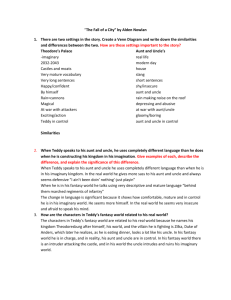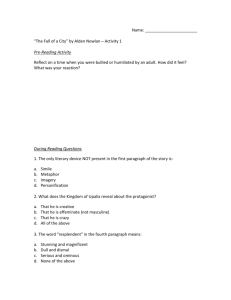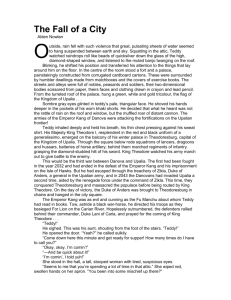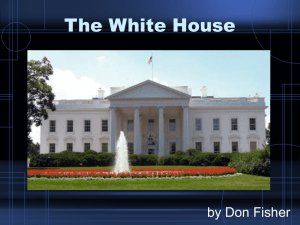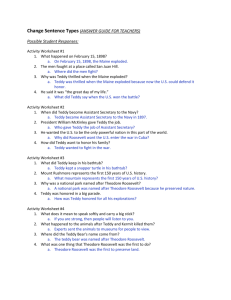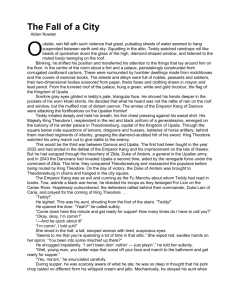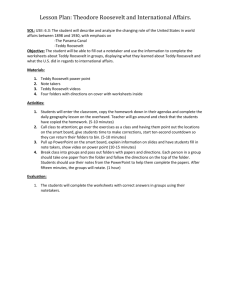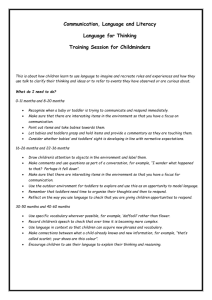fall_of_a_city_key
advertisement
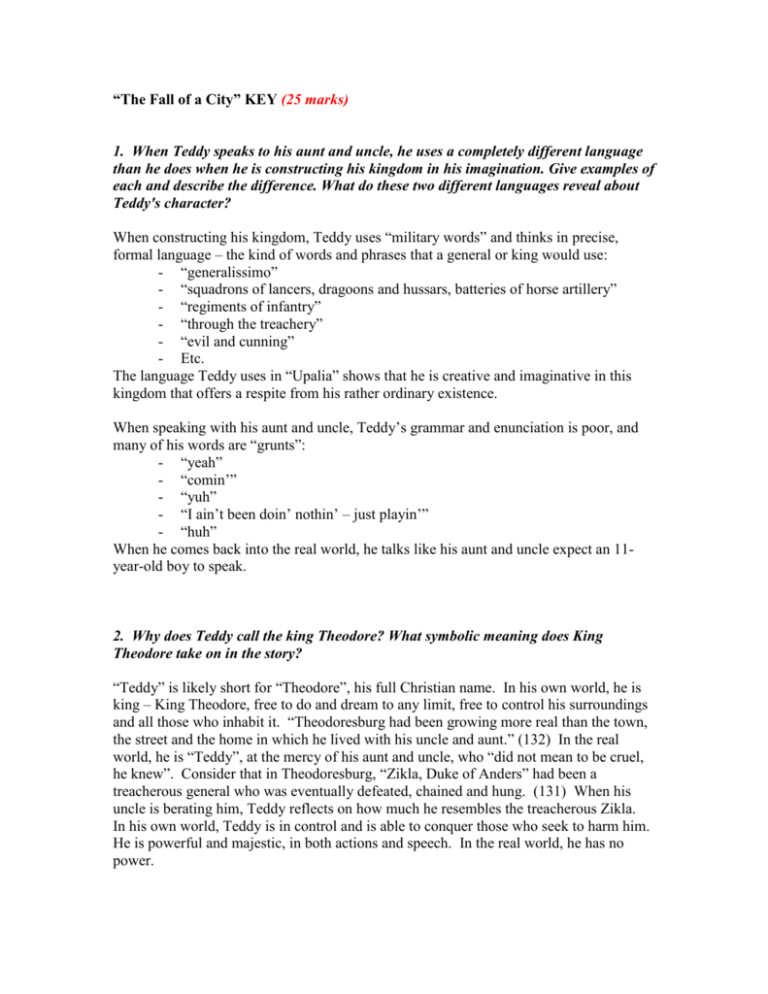
“The Fall of a City” KEY (25 marks) 1. When Teddy speaks to his aunt and uncle, he uses a completely different language than he does when he is constructing his kingdom in his imagination. Give examples of each and describe the difference. What do these two different languages reveal about Teddy's character? When constructing his kingdom, Teddy uses “military words” and thinks in precise, formal language – the kind of words and phrases that a general or king would use: - “generalissimo” - “squadrons of lancers, dragoons and hussars, batteries of horse artillery” - “regiments of infantry” - “through the treachery” - “evil and cunning” - Etc. The language Teddy uses in “Upalia” shows that he is creative and imaginative in this kingdom that offers a respite from his rather ordinary existence. When speaking with his aunt and uncle, Teddy’s grammar and enunciation is poor, and many of his words are “grunts”: - “yeah” - “comin’” - “yuh” - “I ain’t been doin’ nothin’ – just playin’” - “huh” When he comes back into the real world, he talks like his aunt and uncle expect an 11year-old boy to speak. 2. Why does Teddy call the king Theodore? What symbolic meaning does King Theodore take on in the story? “Teddy” is likely short for “Theodore”, his full Christian name. In his own world, he is king – King Theodore, free to do and dream to any limit, free to control his surroundings and all those who inhabit it. “Theodoresburg had been growing more real than the town, the street and the home in which he lived with his uncle and aunt.” (132) In the real world, he is “Teddy”, at the mercy of his aunt and uncle, who “did not mean to be cruel, he knew”. Consider that in Theodoresburg, “Zikla, Duke of Anders” had been a treacherous general who was eventually defeated, chained and hung. (131) When his uncle is berating him, Teddy reflects on how much he resembles the treacherous Zikla. In his own world, Teddy is in control and is able to conquer those who seek to harm him. He is powerful and majestic, in both actions and speech. In the real world, he has no power. 3. What is the symbolic meaning of the cut-out figures and the kingdom of Upalia? The kingdom of Upalia is “up in the attic” – no coincidence. It is Teddy’s literal and figurative escape. When people in the real world are cruel to him, he can punish them through their Upalian counterpart. This is specifically seen through Teddy’s belittling uncle being re-created as the treacherous Zikla, who is hanged for his crimes. The cutout figures represent those in Teddy’s world – the good and the bad, those who are loyal and those who betray. In Teddy’s mind, his cut-out figures are alive, while those in the real world are cardboard and one-dimensional. Of course, those who actually are in the real world, like his uncle, see things exactly the opposite, as he sneeringly refers to Teddy’s population as “paper dolls”. 4. Explain how the description in the first paragraph of the story is an example of foreshadowing. In the first paragraph of the story, “rain fell with such violence that great, pulsating sheets of water seemed to hang suspended between earth and sky”. Teddy is up in the attic with his cardboard city and paper people, happily insulated in his make-believe world. The body of the story revolves around an imaginary battle in Upalia, and a real conflict between Teddy and his uncle. By the end of the story, Teddy’s uncle has belittled him, calling him a “great big lummox [who] has been playing with paper dolls. The violent rain in the opening sentence foreshadows Teddy’s tears and act of destruction in the conclusion as he responds to the taunts of his uncle – “He bent and seized the cardboard palace. Gritting his teeth and grunting, he tore at its walls. The corrugated board was sturdy: he was crying by the time he finished tearing it to shreds.” 5. What is the theme of "The Fall of a City"? How does this general truth about life apply specifically to the story? How does it apply generally to life? The theme of the story is that it is important for young people to protect themselves from the putdowns and discouragement of others that can shatter their personal dreams, visions, and accomplishments. Teddy used his make-believe kingdom to shelter himself from a dreary and comfortless life. Through his cardboard and paper creations, he was able to take himself to a better place, where he was in control. His uncle destroyed the refuge he had created. The lives of young people are often full of putdowns and discouragements, from both peers and adults – they need to have a means of protecting themselves from this sort of destruction.
